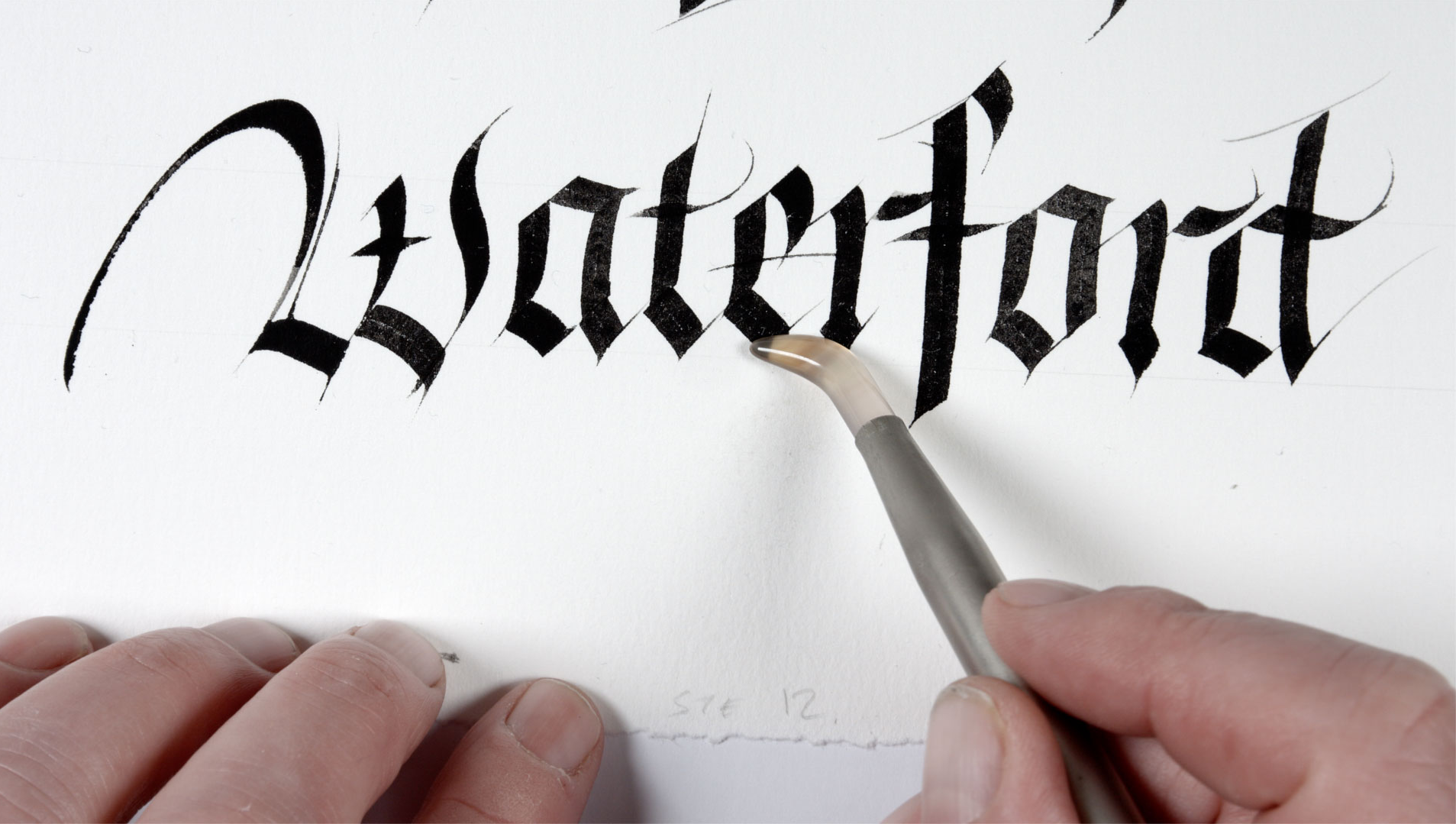
The Woodstown Viking Sword
‘Who can separate a man from his sword? One is worth nothing without the other’, (Estonian Viking epic).
The Vikings were superb seamen and warriors who from the 790’s left their Scandinavian homelands in search of plunder and opportunities to trade and the first attack on Ireland occurred in 795.
The first Viking settlement in the Waterford area was at Woodstown, on the bank of the river Suir, about 5 kilometres up river from the city. This site, dating to about 840 was discovered by archaeologists in 2003 in advance of the construction of the Waterford city bypass. The settlement at Woodstown was established for raiding deep into the surrounding countryside and also abroad, in Wales, England and France. It was also a major international trading settlement, home to craftsmen and specialised metal workers connecting Ireland to the larger Viking world.
One of the most important discoveries at Woodstown was the grave of a Viking warrior, dating to about 850. Very little is known about the warrior buried here. The soil is so acidic that nothing of his skeleton survived and only the metal parts of the weapons survived. Everything else rotted away over the centuries. However, the evidence from the archaeologists point to the fact that he was an extremely important individual in the local community and may indeed have been one of the major players in the larger Viking world.
The grave was located outside the settlement and was originally covered by a large mound which meant that it would be clearly seen from the river and also from the surrounding countryside.
Viking warriors were usually buried with one or more weapons – the more weapons in the grave the higher the status of the warrior. However, the grave at Woodstown is the only example in Ireland where the warrior was buried with all his weapons – sword, shield, axe, spear and knife. Even the hone stone for sharpening the weapons was included. All this goes to show that for the inhabitants of Woodstown this individual was someone really important – perhaps even of royal blood.
The sword was the ultimate status symbol of a Viking warrior. Swords were treasured possessions and were so valuable they were usually handed down through the generations from father to son. In a Viking house a sword would have pride of place – sometimes even hanging over the warrior’s bed. We also know from the Viking Saga’s that warriors gave names to their swords – names such as War-Snake, Viper, Battle-Flasher, Serpent of Blood, Widow-Maker Ice of Battle, Torch of Blood.
However, the Viking warrior at Woodstown was buried with his sword. Perhaps he had no son to hand the sword on to or perhaps he was of such high status that the people of Woodstown felt that he deserved to keep his sword with him in the next life. It is also significant that the sword was deliberately broken into four separate pieces before being placed in the grave – which also points to the enormous respect the community here had for this individual.
Woodstown may have been a new town in the making, but it never succeeded. At some stage in the early 900’s it was abandoned. In 914 other group’s of Viking raiders and adventurers sailed up the river Suir and founded Waterford – Ireland’s first permanent city and over the following centuries the memory of the Viking settlement at Woodstown faded as nature reclaimed the site. Over time also the large mound covering the grave of the Viking warrior slowly disappeared – eroded by the weather and in later centuries ploughed out by farmers. However beneath the soil the Viking warrior slumbered peacefully until 2003, when he once again made history.
His sword, together with his other weapons, are now on display in the permanent Viking exhibition in Reginald’s Tower.


